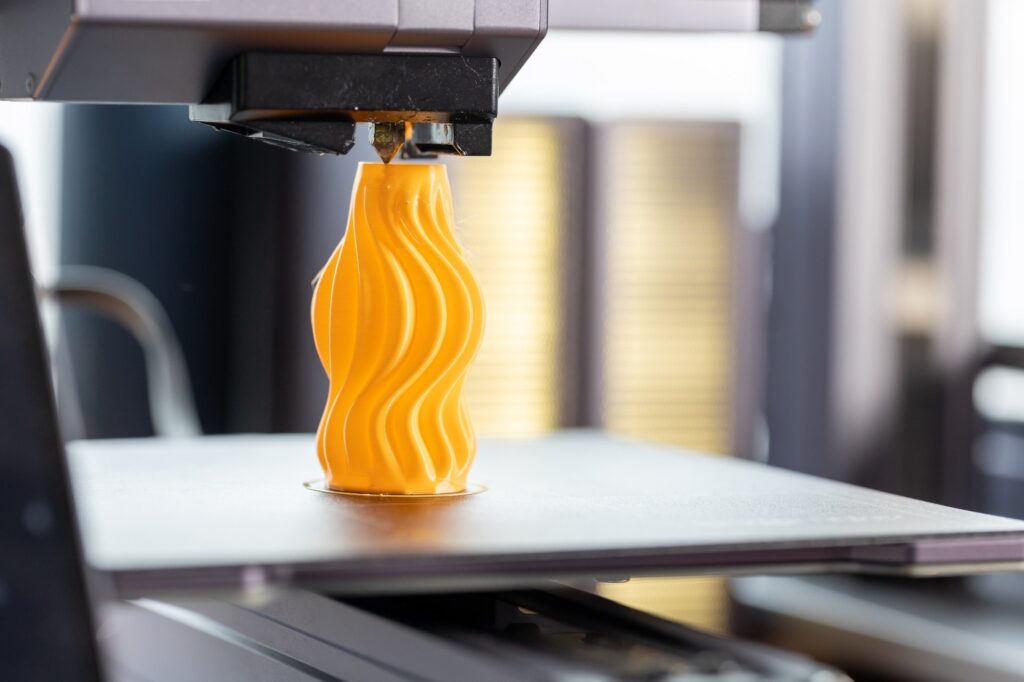Nanofabrication is the process of designing and manufacturing structures at the nanoscale. Soft lithography and 3D printing are examples of techniques used to fabricate nanomaterials. But how do they compare, and what advantages does each provide?
Image Credit: Sherbak_photo/Shutterstock.com
Soft Lithography
Soft lithography is a fabrication technique used to create micro- and nanoscale patterns. Developed in the early 1990s by George M. Whitesides and colleagues, it simplifies pattern formation by using elastomeric materials, most commonly polydimethylsiloxane (PDMS).
The process begins with the creation of a master mold, typically made using photolithography, which defines the desired pattern. This mold is then used to cast and cure PDMS stamps or molds, which can transfer patterns onto substrates or form intricate structures in different materials.
Soft lithography encompasses several techniques, including microcontact printing, replica molding, micromolding in capillaries (MIMIC), and microtransfer molding.
In microcontact printing, a PDMS stamp is coated with a functional material, known as “inking,” and pressed onto a substrate to transfer a pattern. Replica molding involves filling a PDMS mold with a liquid precursor that hardens into a solid patterned material.
3D Printing
3D printing, also known as additive manufacturing, is a fabrication technology that builds three-dimensional structures layer by layer. Unlike subtractive manufacturing methods—such as milling or lathing, which remove material from a solid block—3D printing adds material sequentially to create a final structure.
The process begins with a digital 3D model, typically designed using computer-aided design (CAD) software. The model is then translated into layered instructions, guiding the printer as it deposits material in precise, controlled layers.
Different 3D printing technologies vary in how layers are formed, the materials used, and how layers bond together, which influences the accuracy, surface finish, and mechanical properties of the final product.
Common methods for microfluidic device fabrication include fused deposition modeling, multi-jet modeling, stereolithography (SLA), digital light processing (DLP), and direct laser writing.
SLA, DLP, and direct laser writing rely on photopolymerization, where liquid resin solidifies under light exposure, producing precise, layered structures with smooth surfaces.
Selective laser sintering (SLS) is another widely used 3D printing method, especially in biomedical applications such as bone scaffolds and implants.
How Does Selective Laser Sintering (SLS) 3D Printing Work?
However, for microfluidic devices, SLS is less effective due to its reliance on powder sintering, which results in rougher surfaces and lower resolution, potentially affecting fluid flow and device performance.
Advancements in DLP and multi-jet modeling have improved resolution and fabrication speed, making 3D printing an increasingly viable option for microfluidic device fabrication.
Key Differences Between Soft Lithography and 3D Printing
| Key Differences | Soft Lithography | 3D Printing |
|---|---|---|
| Fabrication Process | Transfers patterns from a pre-designed mold onto a substrate. | Builds structures layer by layer from digital models. |
| Material Use | Primarily uses elastomers like PDMS. | Supports a broader range of materials, including polymers (e.g., hydrogels), metals, and ceramics. |
| Applications | Microfluidic devices, biosensors, electronic patterning, and flexible electronics. | Biomedical devices, complex structural components, rapid prototyping, and multi-material microfluidics. |
| Advantages | High precision, cost-effective, flexible, and ideal for uniform pattern replication. | Design flexibility, automation, scalability, and efficient material usage. |
| Limitations | Requires skilled labor, time-intensive, and less suited for large-scale or multi-layered structures. | Lower resolution than soft lithography, high-end printers are costly, and post-processing is often required. |
Choosing Between Soft Lithography and 3D Printing
Both soft lithography and 3D printing offer valuable capabilities in microfabrication. Soft lithography excels in precise pattern replication, making it ideal for microfluidics and biosensors, while 3D printing enables the direct fabrication of complex, custom geometries suited for biomedical engineering and prototyping.
As technologies evolve, improvements in resolution, speed, and material diversity will expand their applications. The integration of bioprinting for organ-on-a-chip systems and hybrid fabrication approaches may further bridge the gap between these techniques.
Future advancements will also focus on standardizing processes and developing eco-friendly materials to ensure reliability, biocompatibility, and sustainability in next-generation microfluidic and biomedical devices.
To learn more about the applications of 3D printing, please see the following resources:
References and Further Reading
Tahir, U.; Shim, Y. B.; Kamran, M. A.; Kim, D.-I.; Jeong, M. Y. (2021). Nanofabrication Techniques: Challenges and Future Prospects. Journal of Nanoscience and Nanotechnology. https://doi.org/10.1166/jnn.2021.19327
Xia, Y.; Whitesides, G. M., Soft Lithography. (1998). Angewandte Chemie International Edition. https://doi.org/10.1002/(SICI)1521-3773(19980316)37:5<550::AID-ANIE550>3.0.CO;2-G
Rankouhi, B.; Javadpour, S.; Delfanian, F.; Letcher, T. (2016). Failure Analysis and Mechanical Characterization of 3d Printed Abs with Respect to Layer Thickness and Orientation. Journal of Failure Analysis and Prevention. https://link.springer.com/article/10.1007/S11668-016-0113-2
Xu, J.; Harasek, M.; Gföhler, M. (2025). From Soft Lithography to 3d Printing: Current Status and Future of Microfluidic Device Fabrication. Polymers. https://www.mdpi.com/2073-4360/17/4/455
Kim, P.; Kwon, K. W.; Park, M. C.; Lee, S. H.; Kim, S. M.; Suh, K. Y. (2008). Soft Lithography for Microfluidics: A Review. https://s-space.snu.ac.kr/handle/10371/9558
Quake, S. R.; Scherer, A. (2000). From Micro-to Nanofabrication with Soft Materials. science. https://www.science.org/doi/full/10.1126/science.290.5496.1536
Elder, B.; Neupane, R.; Tokita, E.; Ghosh, U.; Hales, S.; Kong, Y. L. (2020). Nanomaterial Patterning in 3d Printing. Advanced materials. https://doi.org/10.1002/adma.201907142
Bhattacharjee, N.; Urrios, A.; Kang, S.; Folch, A. (2016) The Upcoming 3d-Printing Revolution in Microfluidics. Lab on a Chip. https://pubs.rsc.org/en/content/articlehtml/2016/lc/c6lc00163g
Song, Y.; Ghafari, Y.; Asefnejad, A.; Toghraie, D. (2024). An Overview of Selective Laser Sintering 3d Printing Technology for Biomedical and Sports Device Applications: Processes, Materials, and Applications. Optics & Laser Technology. https://doi.org/10.1016/j.optlastec.2023.110459
Deng, J.; Jiang, L.; Si, B.; Zhou, H.; Dong, J.; Cohen, P. (2021). Afm-Based Nanofabrication and Quality Inspection of Three-Dimensional Nanotemplates for Soft Lithography. Journal of Manufacturing Processes. DOI: https://doi.org/10.1016/j.jmapro.2021.04.051
Gu, S.; Chen, B.; Xu, X.; Han, F.; Chen, S. C. (2025). 3d Nanofabrication Via Directed Material Assembly: Mechanism, Method, and Future. Advanced Materials. https://advanced.onlinelibrary.wiley.com/doi/abs/10.1002/adma.202312915
Huang, J.; Zhang, B.; Xiao, J.; Zhang, Q. (2022). An Approach to Improve the Resolution of Dlp 3d Printing by Parallel Mechanism. Applied Sciences. https://www.mdpi.com/2076-3417/12/24/12905
Khosravani, M. R.; Reinicke, T. (2020). On the Environmental Impacts of 3d Printing Technology. Applied Materials Today. https://www.mdpi.com/2076-3417/12/24/12905


